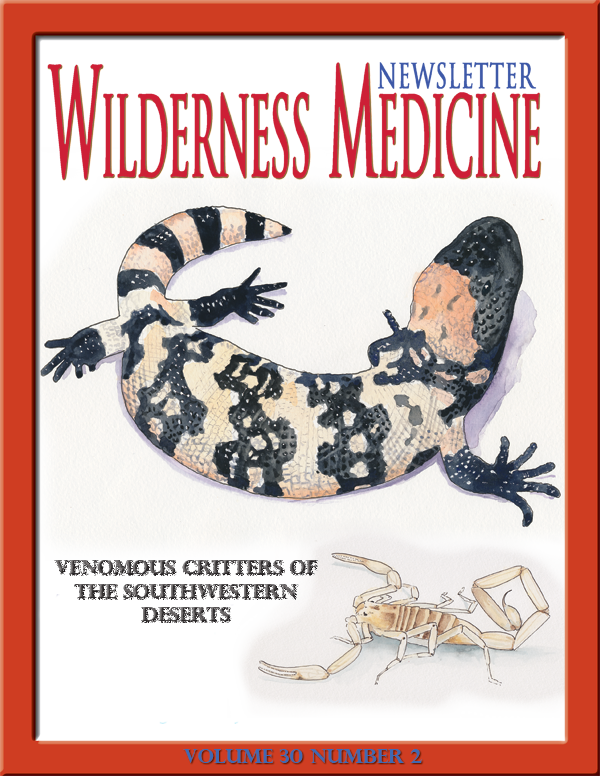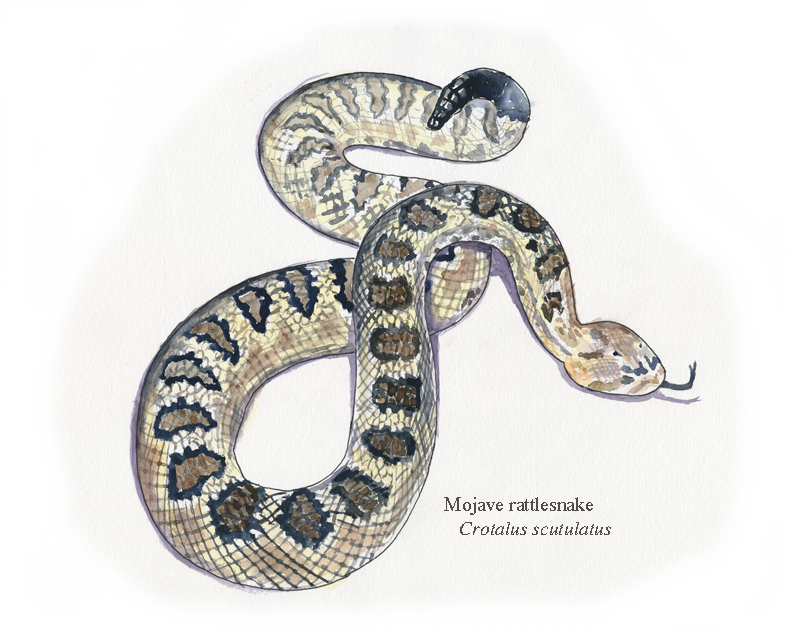Venomous Critters of the Southwestern Deserts

ISSN-1059-6518
Venomous Critters of the Southwestern Deserts
By Jeff DeBellis
Illustrations by T.B.R. Walsh
“Those who travel in desert places do indeed meet with creatures surpassing all description.”
–Cormac McCarthy, Blood Meridian
Deserts are generally inhospitable places. They’re either too hot, too cold, too dry, or too windy. Sandstorms, monsoons, and flash floods ravage the land. The plants are spiky and the animals are venomous. Nonetheless, people like to visit the desert. A lot of people. Because despite the downsides, deserts are beautiful.
There are three distinct hot deserts in the American Southwest – the Chihuahuan, the Sonoran, and the Mojave. The Chihuahuan Desert covers southern New Mexico, western Texas, the extreme southeastern corner of Arizona, and extends into the Mexican states of Chihuahua, Coahuila, and Durango. The Sonoran Desert extends from southern Arizona and southeastern California into the Mexican state of Sonora. The Mojave covers southeastern California, southern Nevada, northwestern Arizona, and a tiny corner of southwestern Utah. The boundaries of the three deserts are determined by the distribution of plant and animal species. In some cases, the individual deserts are bounded by mountain ranges that form “sky islands” of more temperate habitat. Hot deserts differ from cold deserts (like the Great Basin farther north) in that most of their precipitation comes in the form of rain, as opposed to snow.
Deserts are home to a startlingly wide variety of plants and animals that have adapted to the harsh conditions. The Chihuahuan Desert is one of the most biodiverse arid regions on Earth. Most desert animals are not actually venomous. Regardless, all wild animals should be appreciated only from a safe distance. The creatures that are venomous include reptiles, such as snakes and Gila monsters, and arachnids, including spiders, scorpions, and to a lesser degree, tarantulas. This article describes many of the venomous species that are native to the region.
REPTILES
Rattlesnakes
Rattlesnakes live nearly everywhere in the United States, but they are especially abundant in the southwest. There are 36 species in the western hemisphere, 17 in the U.S., and 14 in the southwestern deserts. The most poisonous of these are the Mojave rattlesnake (Crotalus scutulatus), with an LD50 SC of 0.31 mg/kg, and the tiger rattlesnake (Crotalus tigris), with an LD50 SC of 0.21 mg/kg. The LD50, also known as the median lethal dose, indicates how much venom it takes for a snake to kill 50% of its prey. The lower the number, the more potent the venom. The “SC” refers to subcutaneous injection, which is the most common way that humans are exposed to the venom. For comparison, the timber rattlesnake of the Eastern United States has an LD50 SC of 2.25 mg/kg.
